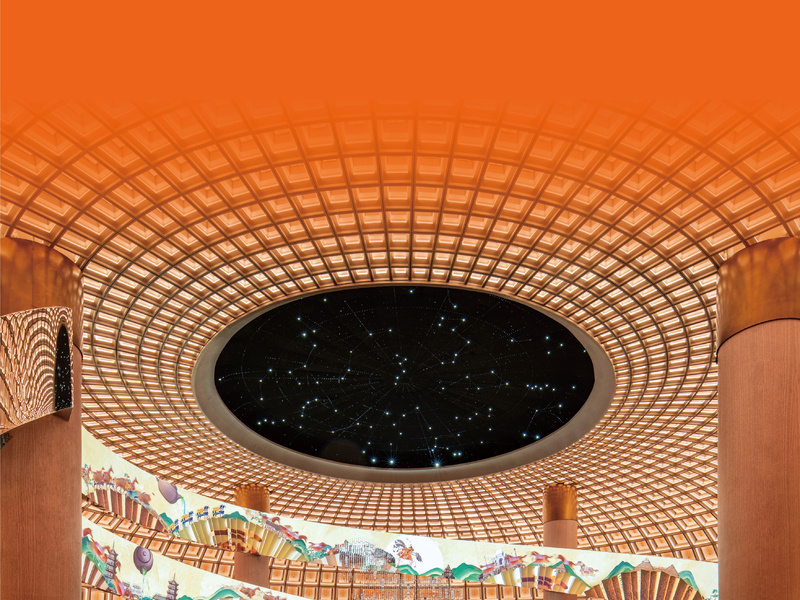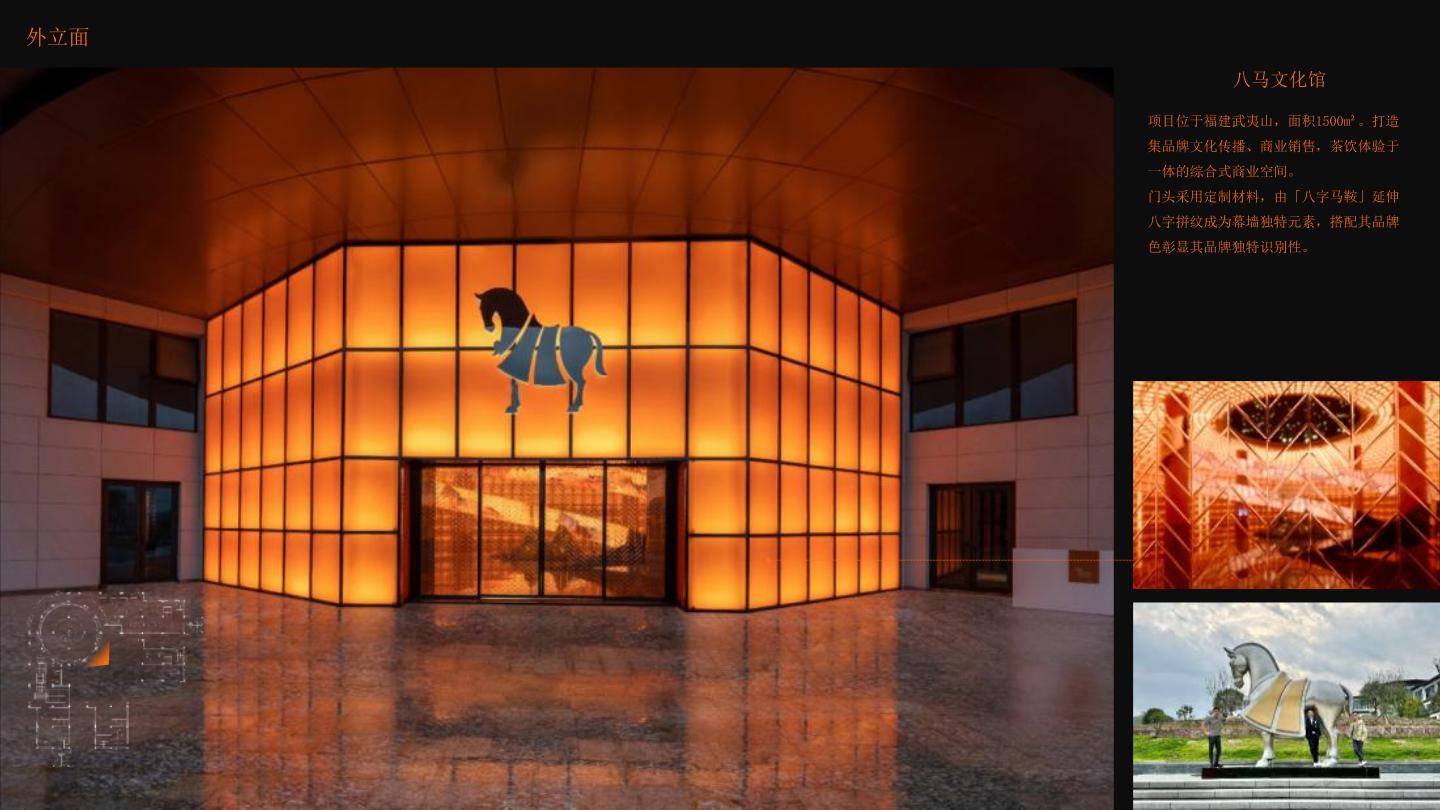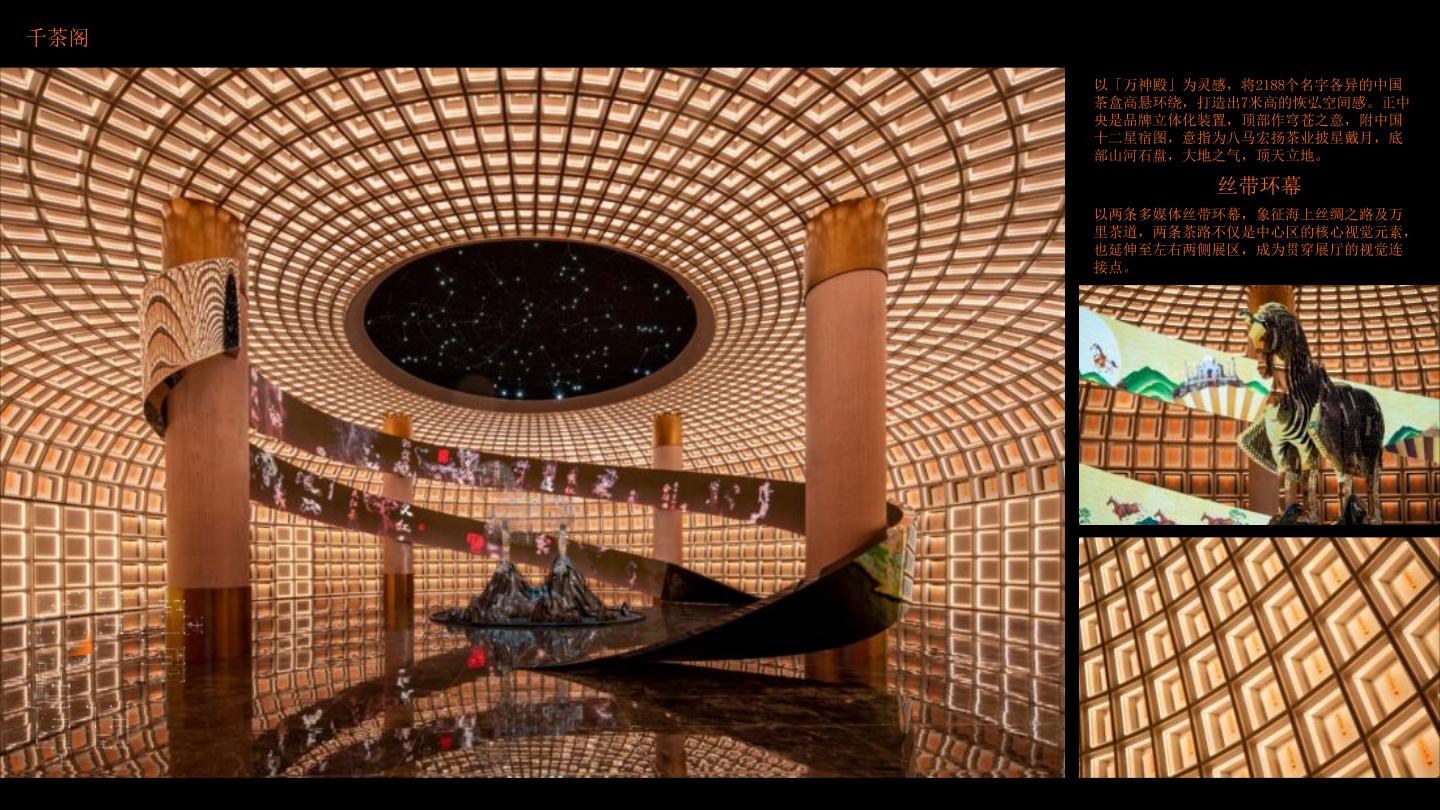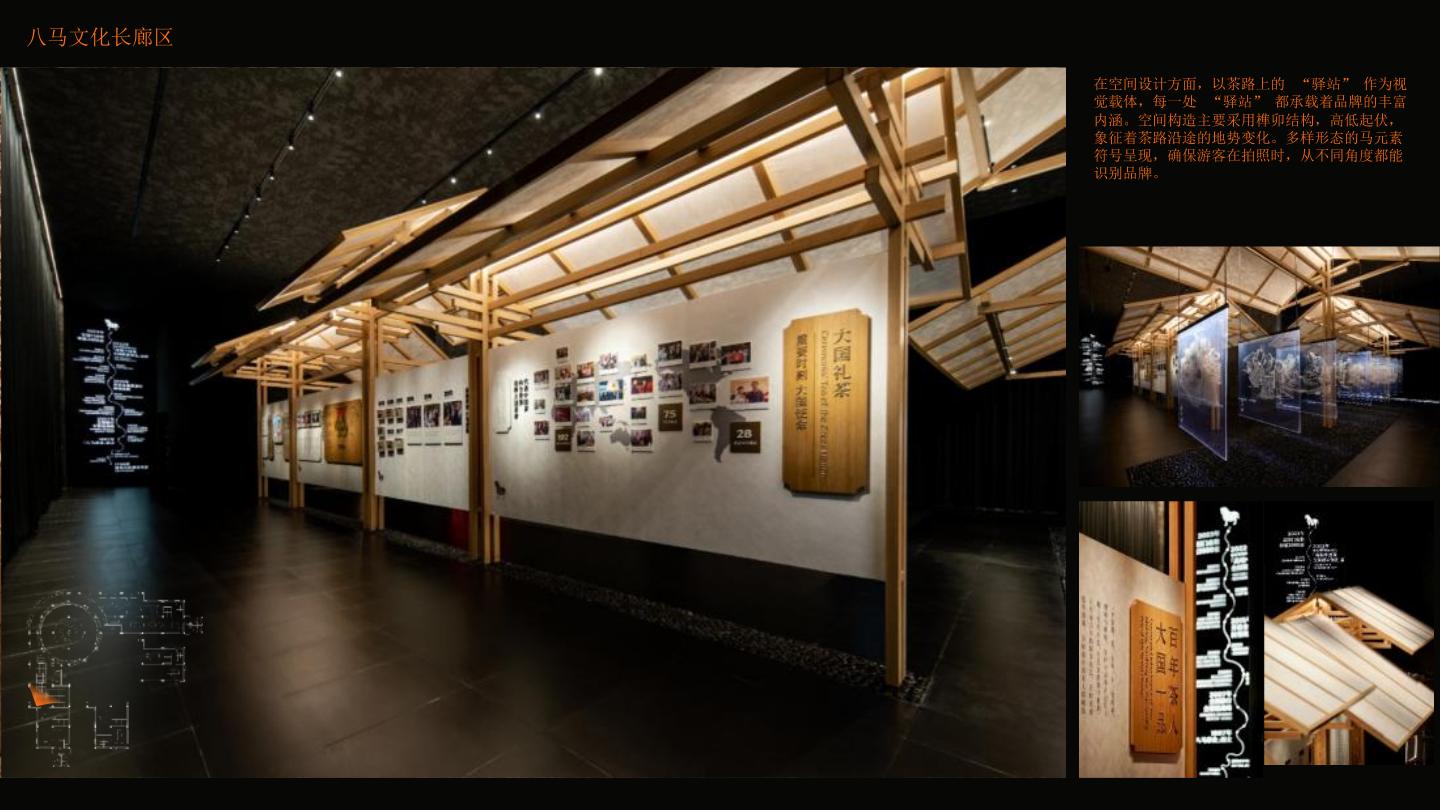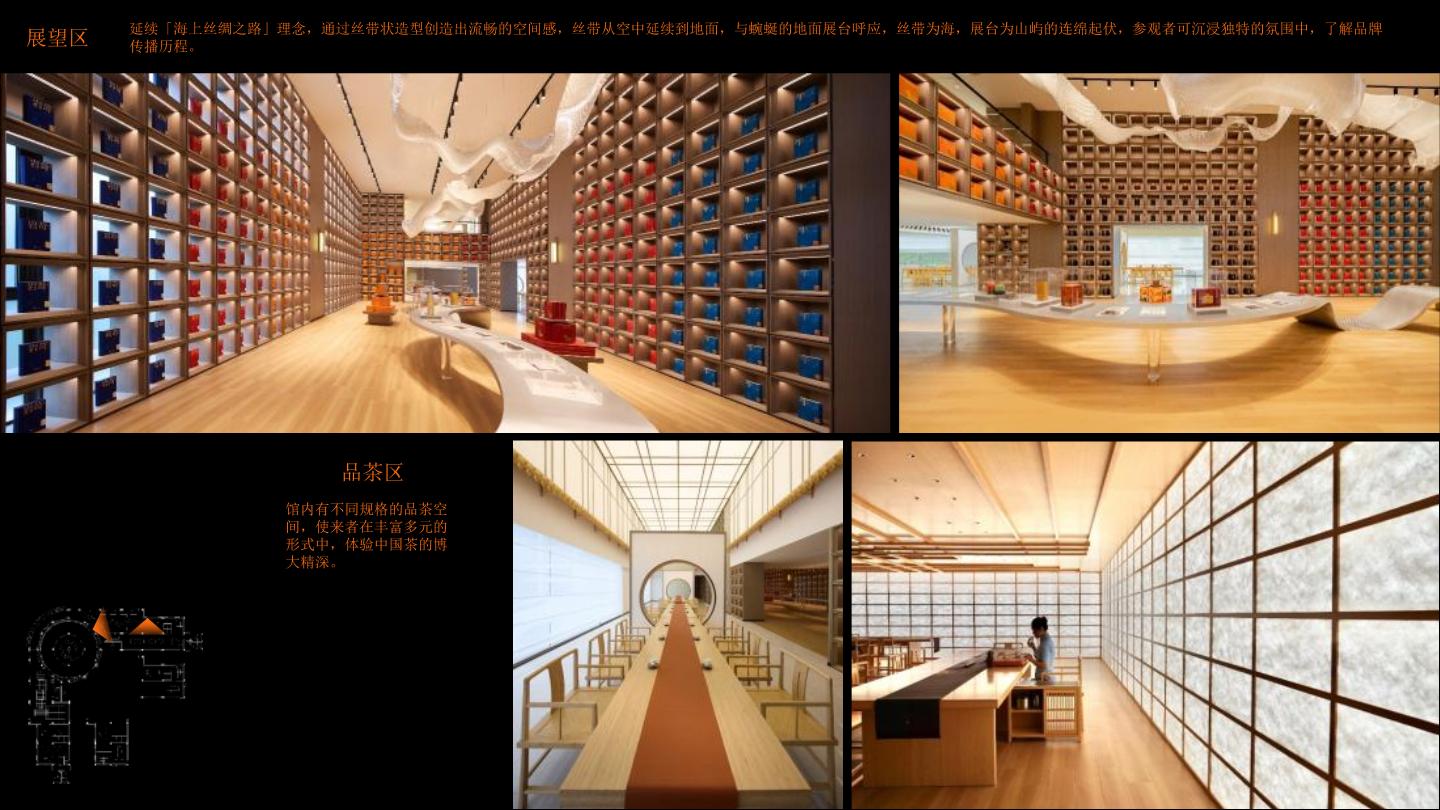Eight horses-thousand tea pavilion construction display
Collection of Works of Bama Wuyishan Cultural Center
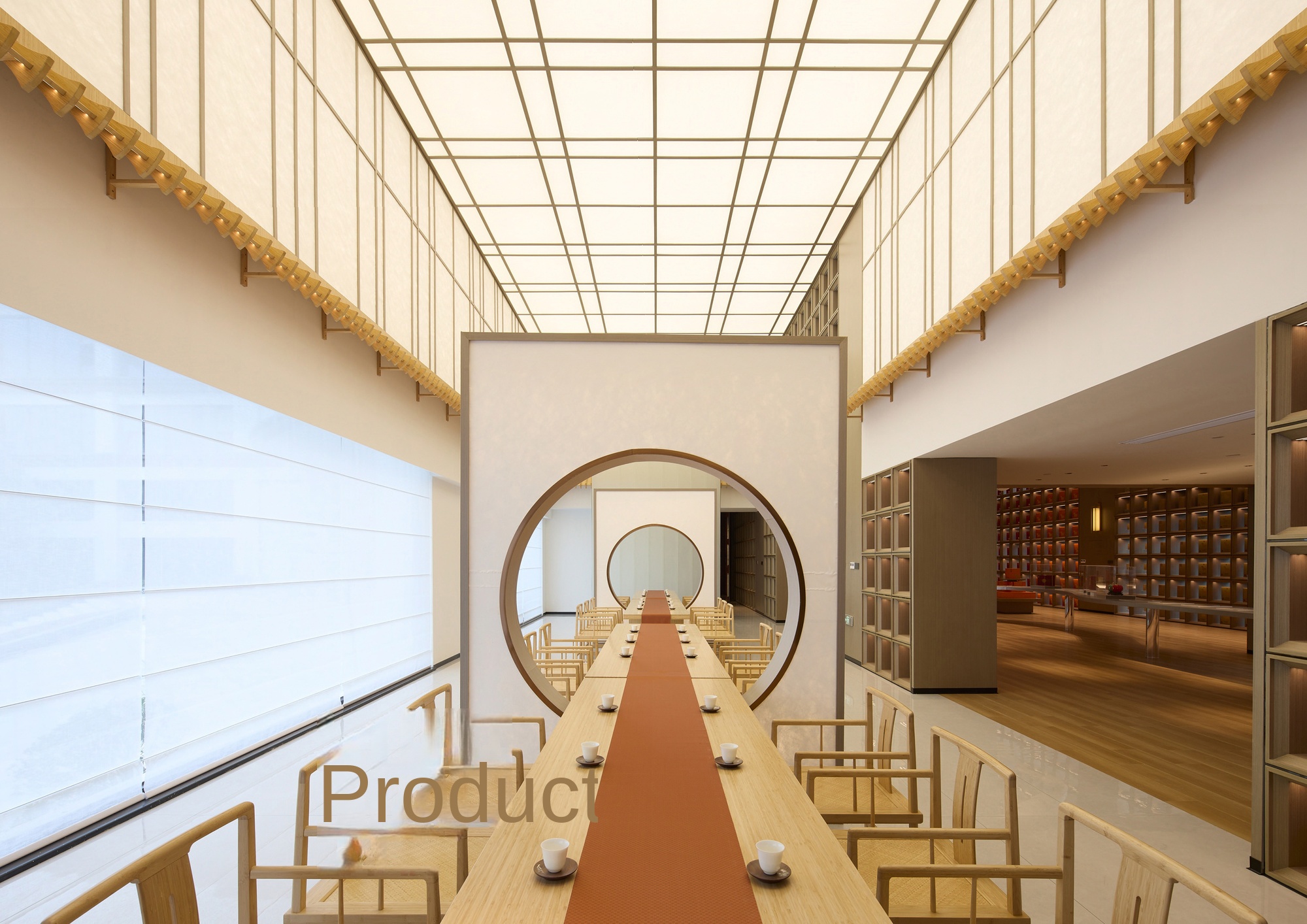
Tea tasting area
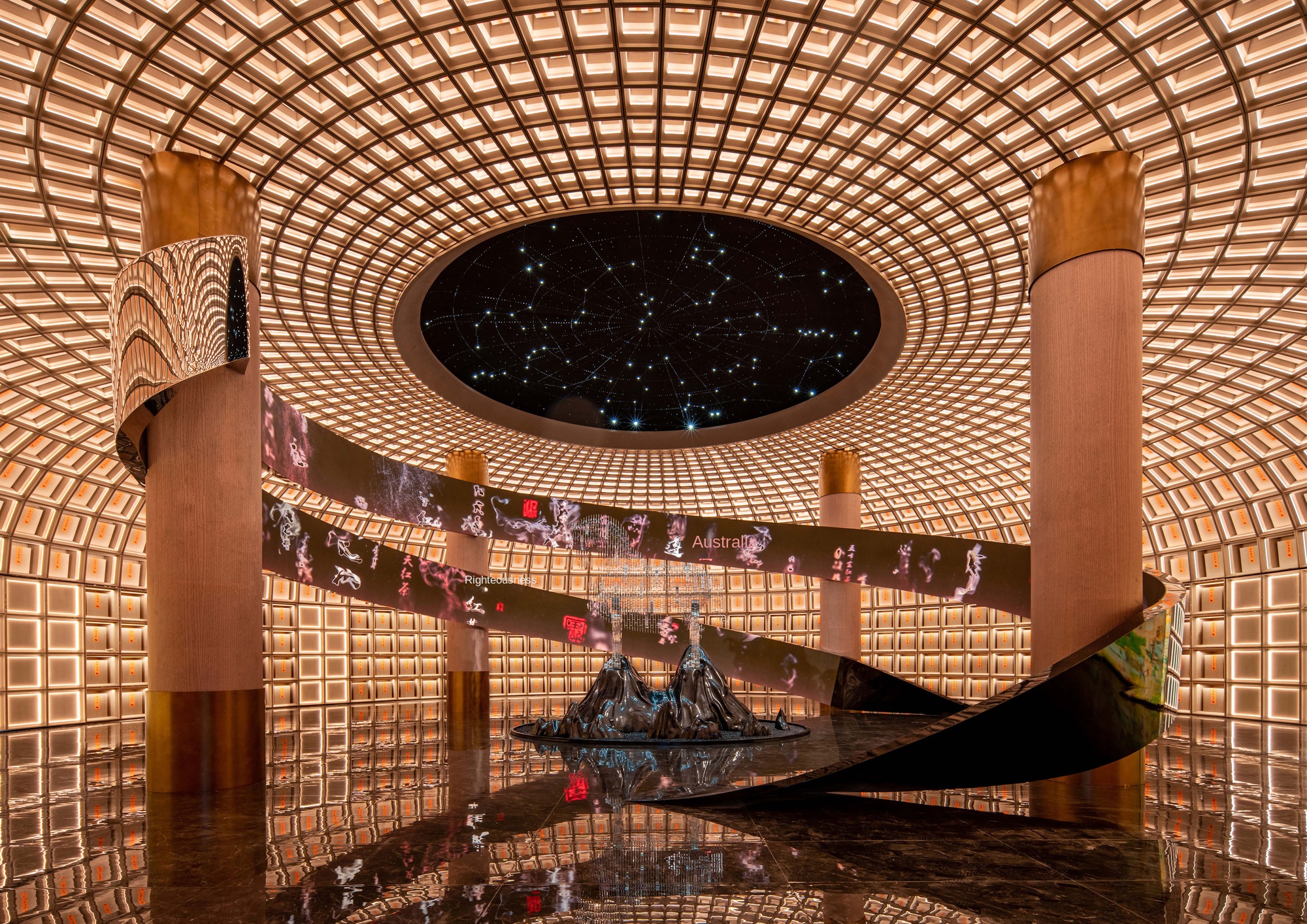
Thousand Tea Pavilion
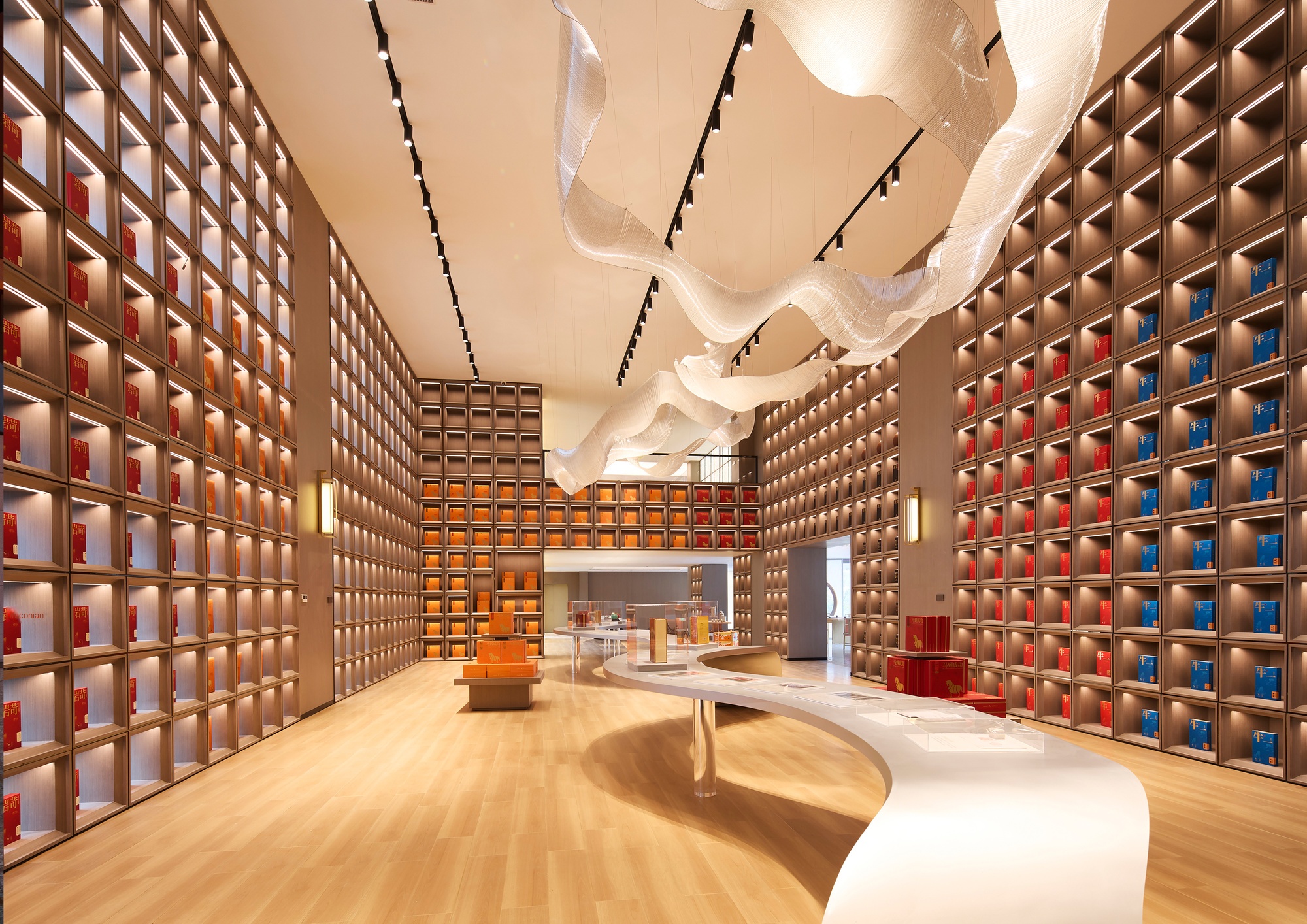
Prospect area
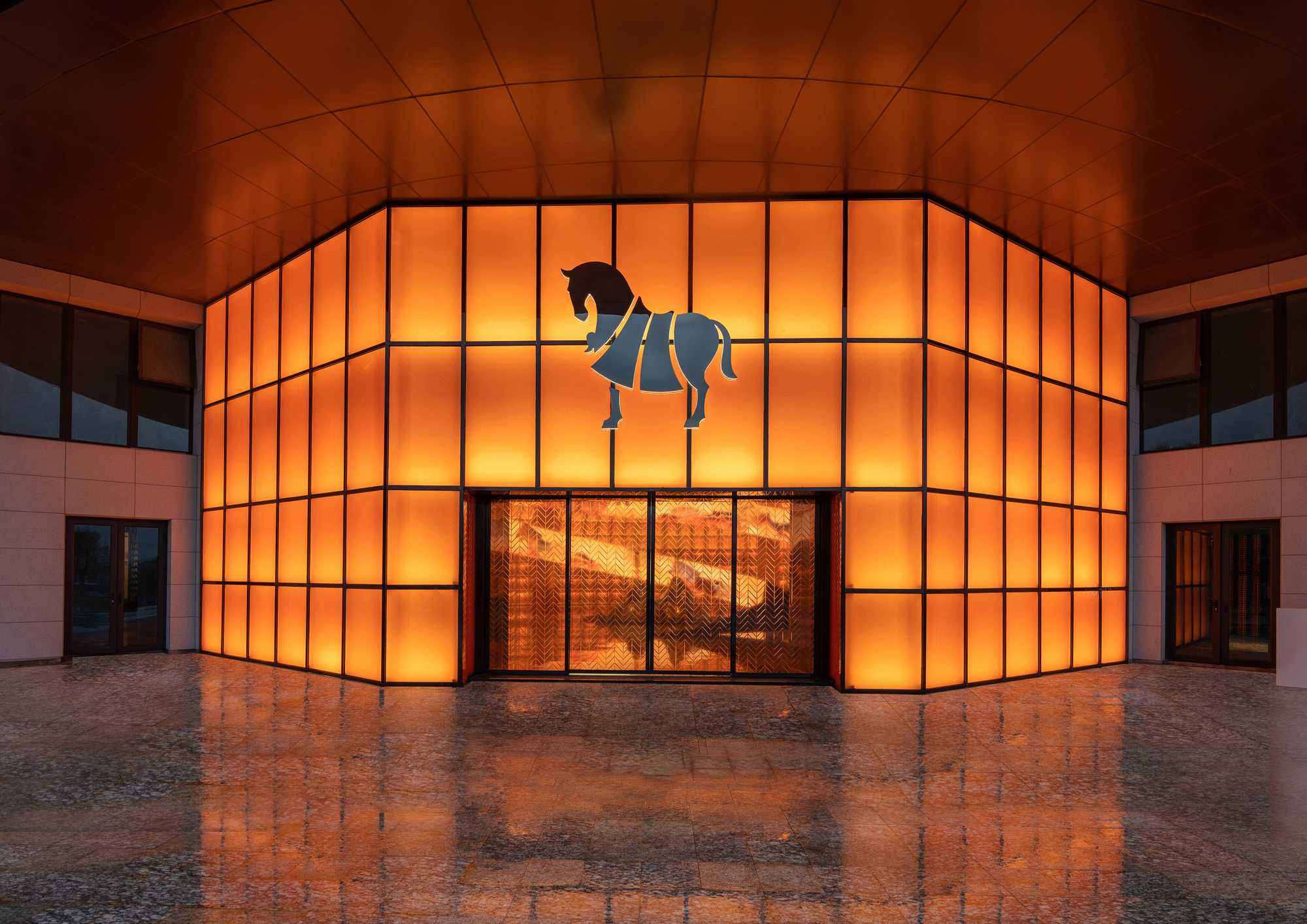
Door head
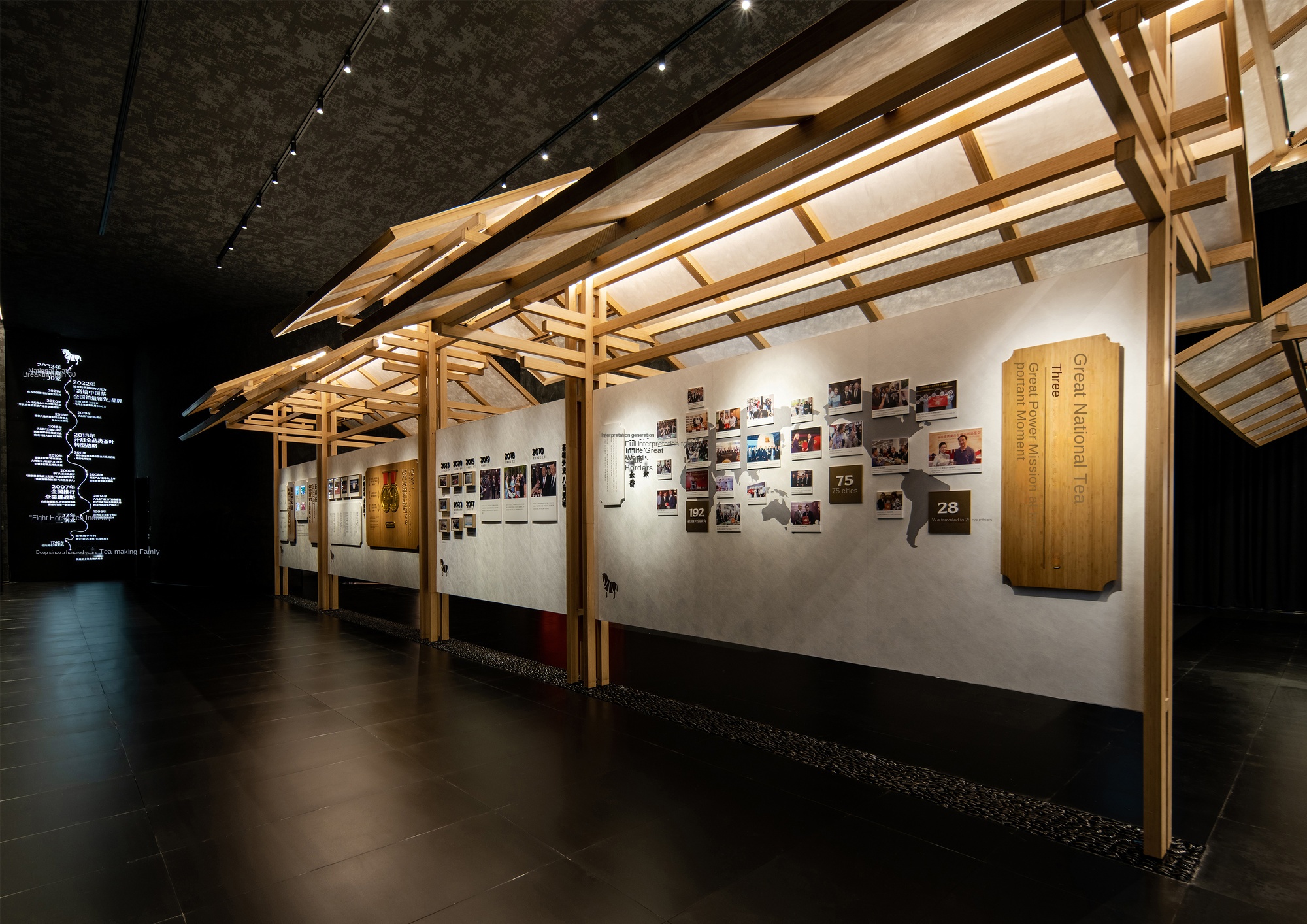
Eight Horse Culture Corridor
The project is located in Wuyi Mountain, Fujian Province. The building is an integrated two-wing structure with an area of 1500m ². We combine space curatorial thinking and brand thinking to create a comprehensive commercial exhibition space integrating brand culture communication, commercial sales and tea experience. From a single sale of tea products, to create a complete set of tea experience, to meet more social functions, for users to achieve a breakthrough in the traditional industry. The material specially customized for the eight-horse tea industry in the space design is extended by the "eight-character saddle" to become a unique element of the space, the overall shape and color, highlighting the unique identity of the brand, from the plane to the three-dimensional multi-dimensional use, so that the "horse" symbol to become the brand spirit carrier. In terms of space design, the two multimedia ribbons ring the curtain, symbolizing the Maritime Silk Road and the Wanli Tea Ceremony. The dynamic digital content vividly presents the grand vision of the Bama Tea Industry of "traveling along mountain and sea roads and inheriting Chinese tea". The two tea roads are not only the core visual elements of the central area, but also extend to the left and right exhibition areas, becoming the visual connection points throughout the exhibition hall. Through the ribbon shape to create a smooth sense of space, the interpretation of the eight horse tea industry in the long history of innovation and development. The ribbon extends from the air to the ground, echoing the winding ground booth. The ribbon symbolizes the sea, and the booth symbolizes the ups and downs of the island. Visitors can immerse themselves in the unique cultural and commercial atmosphere and learn about the brand's spread of Chinese tea around the world. Bama Tea Industry has gone from a well-known tea enterprise in Fujian to representing China's high-end tea to the world. Through the visual expression of the exhibition hall, it not only tells the story of BAMA TEA, but also shows the initial heart of tea and cultural heritage more vividly in front of everyone, giving it the mission of spreading Chinese tea.
This project is located in Wuyi Mountain, Fujian Province, with a building structure comprising a central unit and two wings, totaling 1500m². We have combined spatial curation thinking with brand strategy to innovatively create a comprehensive commercial exhibition space integrating brand culture dissemination, commercial sales, and tea-drinking experiences. From solely selling tea products to crafting a complete tea-drinking experience, fulfilling various social function
This BAMA TEA CULTURAL CENTER was designed to convey BAMA TEA's brand image and cultural connotation to customers and visitors. This design is related to BAMA TEA, because it is a display space set up to enhance the brand image and cultural communication. It aims to show customers BAMA TEA's brand concept, historical heritage and dedication to Chinese tea culture through innovative display methods and space design, and use space to tell the brand story. The purpose of this cultural center is multifaceted. First of all, it aims to enhance customers' awareness and trust in the brand by showing the brand story, historical heritage and cultural connotation of Bama tea industry. Secondly, it should provide a unique visiting experience, so that customers can deeply understand the development history of Bama tea industry and its contribution to Chinese tea culture. In addition, the cultural center also has the function of commercial sales, providing tea experience and brand product display and sales. This idea is appropriate because it vividly presents the brand image and cultural connotation in front of customers through innovative space design and display methods. Through the use of three-dimensional symbols, multimedia ribbon screen and long scroll illustration, the cultural center has successfully created an attractive exhibition space to attract customers to understand and experience the brand culture of BAMA TEA. At the same time, the cultural center also combines commercial sales functions to provide customers with opportunities to taste and purchase products, and increase brand exposure and sales.
1. Social welfare: serving the society: the cultural center is not only a commercial exhibition space, but also a cultural exchange platform serving the society. By displaying the brand culture and traditions of the Bama tea industry, the cultural center provides visitors with an opportunity to gain an in-depth understanding of Chinese tea culture and history, and promotes the inheritance and development of tea culture. In addition, the cultural center has been listed as one of the official tourist routes of the local government tourism bureau, contributing to local tourism, tea culture, taxation, etc.
2. Environmental sustainability: resource conservation and environmental protection: in the process of design and operation, the cultural center pays attention to resource conservation and environmental protection. In the aspect of space design, the waste and recycled composite pressed bamboo and wood materials and energy-saving design are used to reduce energy consumption; in the aspect of display content, digital and multimedia display methods are used to reduce the use of paper materials, improve the efficiency of resource utilization, and minimize the impact on the environment.
3. **Workforce Benefits and Accessibility**: During its operation, the cultural center focuses on the labor benefits of employees and the accessibility of visitors. Employees enjoy a good working environment and benefits, which improves their enthusiasm and production efficiency; at the same time, the cultural center also provides barrier-free facilities and services to ensure the right to visit and experience of all people.
To sum up, the Bama Cultural Center project embodies the concept of sustainable development in terms of social and environmental considerations. It has made positive contributions to society and the environment by serving the society, saving resources, protecting the environment and paying attention to employee welfare. It is a sustainable project with social responsibility and environmental awareness.
The des
KL & K DESIGN is an internationally renowned design consulting firm run by Dr. Jin Daiqiang, Mr. Liu Xiaokang and Mr. Gao Shaokang. Formerly known as Jin and Liu design consultants, after nearly 40 years of development, now has companies in Hong Kong and Shenzhen, with business all over the country, serving more than 200 domestic and foreign customers, and winning numerous awards in the industry.







